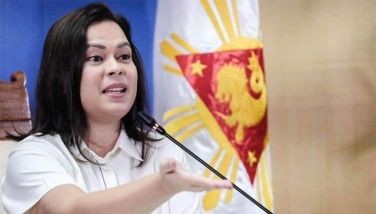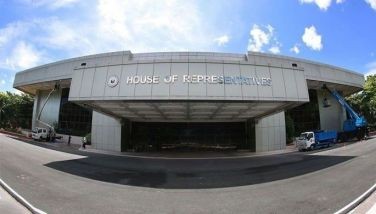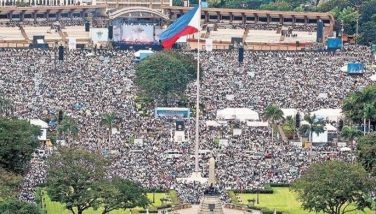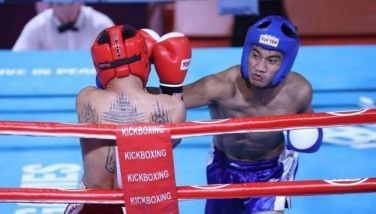Outstanding Asians: The Magsaysay Awards
July 18, 2005 | 12:00am
In April 1957, six weeks after Ramon Magsaysay’s tragic death in a plane crash, the Rockefeller Foundation suggested to the new President, Carlos P. Garcia, the creation of a Magsaysay Award to be given yearly to persons in Asia who have done something outstanding for the good of the people. It was a splendid idea, and a Magsaysay Award Foundation was created. The first awarding was in 1958.
At first there were five categories thus recognized: government service, public service, community leadership, journalism and literature, and peace and international understanding. More recently in 2001 a sixth category was added with funding from the Ford Foundation: emergent leadership.
In preparation for the forthcoming 50th anniversary of the Awards in 2007, a series of eight volumes is being planned containing brief biographical sketches of the more outstanding among the awardees. The first volume has already come off the press, published jointly by the Magsaysay Award Foundation and Anvil Publishing Inc. Its title: Great Men and Women of Asia: Magsaysay Awards 1958-1967. Fifteen persons have been chosen from among the awardees of the first decade.
The book is attractively printed, each article illustrated with a pen portrait of the person.
The first one featured is Mother Theresa, whose concern for the poorest of the poor has electrified the world.
One of the most unusual among the awardees was a Chinese Catholic priest whose life was as full of adventure as that of a hero in a novel. When the Japanese invaded China in 1939, the Chinese government conscripted the priest into the army where he eventually rose to the rank of lieutenant colonel. He led his troops first against the Japanese, then against the Communist Chinese. Imprisoned by the Communists, he escaped to Viet Nam and resumed his pastoral work, which included leading his flock first as refugees, later as a self-defense army.
The biography that most interested me was that of Mochtar Lubis whom I got to know. He was the first chosen for the award for journalism in 1958.
As a boy Mochtar Lubis saw a scene that had a traumatic effect on him. Indonesia was still under the oppressive Dutch regime, and he saw two men lying prostrate, their outstretched arms tied down, and the blood spurting from their backs while prison officials were scourging them with a lash. He devoted his later life to the fight for freedom and human rights. He and the paper that he edited suffered the consequences. It is to the credit of the Magsaysay Foundation that they chose Mochtar Lubis for the first award in journalism in 1958. Lubis was then in prison and it was not until eight years later that he was able to come to Manila to receive the award.
Not mentioned in the book is the sequel. Many years later, Mochtar Lubis returned his diploma in protest against the Magsaysay Award for Journalism being given to one of those who had previously tried to suppress press freedom. If the same award is given to one who tried to suppress freedom as to one who fought and suffered for it, the award was meaningless.
Perhaps the Magsaysay Award Foundation may need to reexamine their procedures for obtaining nominations and information concerning prospective awardees. To give one example.
Some years ago I wrote to the Foundation suggesting that perhaps they might consider a certain person as a possible awardee for public service. I received an answer that stunned me. The foundation told me that they did not accept nominations from just anybody, but only from those whom they designated to make nominations.
The Nobel Prize – a much older and much more respected institution – not only accepts but invites nominations, not only from important entities and personages, but even from any professor in any university in the world. Surely the Magsaysay Award foundation could afford to be less restrictive, and perhaps less arrogant.
At first there were five categories thus recognized: government service, public service, community leadership, journalism and literature, and peace and international understanding. More recently in 2001 a sixth category was added with funding from the Ford Foundation: emergent leadership.
In preparation for the forthcoming 50th anniversary of the Awards in 2007, a series of eight volumes is being planned containing brief biographical sketches of the more outstanding among the awardees. The first volume has already come off the press, published jointly by the Magsaysay Award Foundation and Anvil Publishing Inc. Its title: Great Men and Women of Asia: Magsaysay Awards 1958-1967. Fifteen persons have been chosen from among the awardees of the first decade.
The book is attractively printed, each article illustrated with a pen portrait of the person.
The first one featured is Mother Theresa, whose concern for the poorest of the poor has electrified the world.
One of the most unusual among the awardees was a Chinese Catholic priest whose life was as full of adventure as that of a hero in a novel. When the Japanese invaded China in 1939, the Chinese government conscripted the priest into the army where he eventually rose to the rank of lieutenant colonel. He led his troops first against the Japanese, then against the Communist Chinese. Imprisoned by the Communists, he escaped to Viet Nam and resumed his pastoral work, which included leading his flock first as refugees, later as a self-defense army.
The biography that most interested me was that of Mochtar Lubis whom I got to know. He was the first chosen for the award for journalism in 1958.
As a boy Mochtar Lubis saw a scene that had a traumatic effect on him. Indonesia was still under the oppressive Dutch regime, and he saw two men lying prostrate, their outstretched arms tied down, and the blood spurting from their backs while prison officials were scourging them with a lash. He devoted his later life to the fight for freedom and human rights. He and the paper that he edited suffered the consequences. It is to the credit of the Magsaysay Foundation that they chose Mochtar Lubis for the first award in journalism in 1958. Lubis was then in prison and it was not until eight years later that he was able to come to Manila to receive the award.
Not mentioned in the book is the sequel. Many years later, Mochtar Lubis returned his diploma in protest against the Magsaysay Award for Journalism being given to one of those who had previously tried to suppress press freedom. If the same award is given to one who tried to suppress freedom as to one who fought and suffered for it, the award was meaningless.
Perhaps the Magsaysay Award Foundation may need to reexamine their procedures for obtaining nominations and information concerning prospective awardees. To give one example.
Some years ago I wrote to the Foundation suggesting that perhaps they might consider a certain person as a possible awardee for public service. I received an answer that stunned me. The foundation told me that they did not accept nominations from just anybody, but only from those whom they designated to make nominations.
The Nobel Prize – a much older and much more respected institution – not only accepts but invites nominations, not only from important entities and personages, but even from any professor in any university in the world. Surely the Magsaysay Award foundation could afford to be less restrictive, and perhaps less arrogant.
BrandSpace Articles
<
>
- Latest
- Trending
Trending
Latest





























